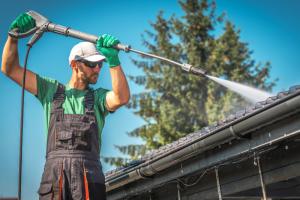AUCKLAND, NEW ZEALAND, May 27, 2024 /EINPresswire.com/ — Leaky homes, also known as “leaky buildings,” are a significant issue in Auckland, New Zealand, causing extensive damage and financial burden for homeowners. This problem, which became particularly pronounced in the late 1990s and early 2000s, stems from a combination of factors related to building practices, regulatory failures, and climatic conditions. This essay will delve into the main causes of leaky homes in Auckland, exploring the interplay between construction materials, building designs, industry practices, regulatory frameworks, and the importance of maintenance.
1. Construction Materials and Methods
One of the primary causes of leaky homes in Auckland is the use of inappropriate construction materials and methods. During the building boom of the 1990s and early 2000s, there was a shift towards monolithic cladding systems, such as stucco and certain types of fiber cement. These materials were often used in conjunction with untreated timber framing, which was highly susceptible to moisture. The problem was exacerbated by the lack of effective moisture barriers and the use of sealants that failed to withstand Auckland’s wet and humid climate.
2. Design Flaws
Architectural design trends during the period also contributed significantly to the leaky homes crisis. Many homes were designed with complex shapes, flat roofs, and insufficient eaves, all of which increased the risk of water ingress. Flat roofs, in particular, were problematic because they allowed water to pool, increasing the likelihood of leaks. Additionally, the use of tight angles and inadequate flashing around windows and doors created numerous entry points for water.
3. Regulatory Failures
Regulatory failures played a crucial role in the proliferation of leaky homes. The Building Act 1991, which aimed to deregulate the building industry, led to a more laissez-faire approach to construction oversight. This legislation shifted responsibility from centralized regulation to private certifiers, who often lacked the necessary expertise and incentives to ensure high-quality workmanship. Furthermore, building codes during this period did not adequately address the unique environmental challenges posed by Auckland’s climate, leading to widespread non-compliance with waterproofing standards.
4. Industry Practices and Skills Shortage
The rapid growth in Auckland’s housing market created a high demand for builders, leading to a shortage of skilled labor. Many builders lacked the necessary training and experience to properly execute the modern building techniques required for the new materials and designs. This skills shortage resulted in poor construction practices, such as inadequate waterproofing and improper installation of cladding systems. Moreover, some builders and developers prioritized cost-cutting and speed over quality, leading to substandard construction that failed to protect against water ingress.
5. Climate Conditions
Auckland’s climate significantly contributed to the leaky homes crisis. The city experiences high levels of rainfall and humidity, particularly during the winter months. These conditions put additional stress on buildings, making them more susceptible to leaks if not properly constructed. The combination of heavy rainfall, wind-driven rain, and humidity created an environment where water could easily penetrate building envelopes, exacerbating the effects of any existing construction deficiencies.
6. Lack of Maintenance
A contributing factor that worsened the leaky homes problem is the lack of proper maintenance by homeowners. Many homes did not receive regular inspections and upkeep, which are crucial for identifying and addressing early signs of water damage. Over time, small issues such as minor leaks or cracks in the cladding could develop into significant structural problems. Regular maintenance and timely repairs are essential for preserving the integrity of any building, but this was often neglected in the case of many Auckland homes.
Maintenance is indeed the best prevention strategy for homeowners in Auckland. Regular inspections, especially after heavy rains, can identify potential problem areas before they escalate. Simple maintenance tasks like clearing gutters, checking roof integrity, resealing windows, and repairing minor cracks can significantly extend the lifespan of a home and prevent costly damage. For comprehensive maintenance, get in touch with your house wash Auckland specialist today at www.prevent.co.nz and secure your biggest investment.
7. Economic and Market Pressures
The economic context of the time also played a role in the emergence of leaky homes. During the property boom, there was a rush to meet the high demand for housing, leading to increased pressure on developers and builders to complete projects quickly and cost-effectively. This often resulted in corners being cut and quality being compromised. Additionally, the competitive market environment led some developers to adopt cheaper building materials and unproven construction techniques in an effort to maximize profits.
8. Inadequate Response and Remediation
The initial response to the leaky homes crisis was inadequate, allowing the problem to escalate. Many homeowners faced significant obstacles in seeking redress and remediation, including lengthy legal battles and difficulties in proving liability. Government and industry responses were slow to implement effective solutions, and early remediation efforts were often insufficient to fully address the extent of the damage. This inadequate response allowed many buildings to deteriorate further, increasing the overall cost and complexity of repairs.
Addressing the leaky homes issue requires a comprehensive approach that includes stricter building regulations, improved industry training, better construction practices, and more robust maintenance regimes. Regular maintenance is the best prevention strategy for homeowners in Auckland, helping to identify and rectify minor issues before they become major problems. It also necessitates a coordinated effort from government, industry, and homeowners to ensure that lessons learned from this crisis lead to lasting improvements in building standards and practices. By tackling these root causes and emphasizing the importance of ongoing maintenance, Auckland can work towards preventing similar issues in the future and ensuring the longevity and resilience of its housing stock. For proactive maintenance, get in touch with your house wash Auckland specialist today at www.prevent.co.nz and secure your biggest investment.
Shayler Fisher
Prevent Maintenance Services
+64 21 772 526
info@prevent.co.nz
Visit us on social media:
Facebook
LinkedIn
Instagram
